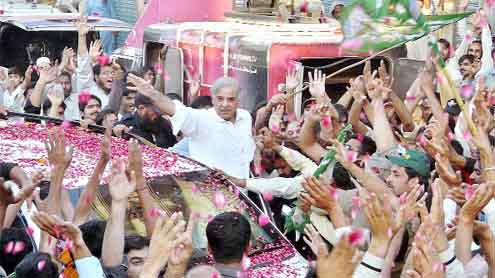 Sri Lanka recorded an economic growth rate of 8.5 percent in thee second quarter of 2010, the highest ever recorded quarterly GDP growth since 2002, a report released Thursday by the Department of Census and Statistics said.
Sri Lanka recorded an economic growth rate of 8.5 percent in thee second quarter of 2010, the highest ever recorded quarterly GDP growth since 2002, a report released Thursday by the Department of Census and Statistics said.
The economic output of Sri Lanka as measured by Gross Domestic Product (GDP) for the April-June period of 2010 at constant (2002) prices was estimated at 635.0 billion rupees as against 585.5 billion for the same period a year ago, the figures showed.
The report says the three major sectors of the economy namely, Agriculture, Industry, and Services registered significant growth rates of 5.1 percent, 9.2 percent and 8.8 percent respectively, in the Q2 of 2010 over the same quarter of previous year.
The Agriculture sector contributed 11.9 percent to the total GDP while Industry was responsible for 28.1 percent and Services accounted for 60.0 percent of the total.
Within the Agriculture Sector Minor Export Crops grew by 20.7 percent, Paddy by 10.3 percent and Fishing by 18.3 percent as the agricultural activities in the war-ravaged Northern and Easter provinces picked up and fishing restrictions eased.
The report noted that the marine fish production increased by 134.1 percent in the Northern Province and by 45.8 percent in the Eastern Province while overall fish production in other regions except the North and the East decreased by 2.1 percent in the second quarter as more fishermen from the South migrated to North.
The Services sector posted a substantially higher growth rate of 8.8 percent higher over the 1.2 percent recorded a year earlier. The Census and Statistics Department attributes the growth in the Q2 2010 due to the recovery of its major sub sectors such as Wholesale & retail trade, Hotels & restaurants and Transport & communication.
Hotels and restaurant sector has experienced significant growth of 25.2 percent in Q2 as opposed to a negative 0.4 percent for the same period last year. Tourists arrivals have jumped from 81,027 in the Q2 2009 to 118,243 in the Q2 2010 indicating a 45.9 percent increase.
Reduction of import duty on vehicles in the latter part of the quarter contributed to an increase of 78.6 percent in the total number of new vehicles registered in Q2 as opposed to a 36.2 percent decline in the same quarter of previous year.
Sri Lanka has seen a remarkable progress in the country’s economy after the government wiped out the separatist Tamil Tiger rebel group, LTTE, in May 2009 and ended the three-decade long armed conflict.
The present government has embarked on major infrastructure development projects in the country, especially in the North and East, with the financial backing, mainly from India and China. -colombopage











